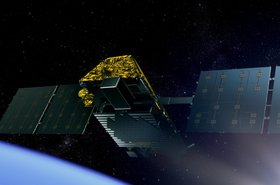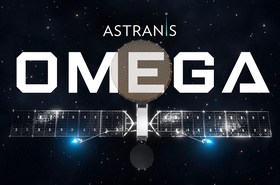SpaceX’s Starlink unit is planning to deploy thousands of W-band Low Earth Orbit (LEO) satellites.
First reported by Space Intel Report, SpaceX has filed advance notice with the International Telecommunication Union (ITU) through Tonga for a constellation of 29,988 satellites in 288 orbital planes at multiple altitudes between 350 and 614 kilometers.
The network, called ESIAFI II, would use W-band frequencies in both the fixed and mobile satellite service bands.
The W-band rages from 75-110 Ghz and sits above the V-band. It has previously been trialed for 5G backhaul by Ericsson.
SpaceX satellites currently utilize the Ka- and Ku-bands; the company has permission for thousands of V-band satellites and operates its ground stations in the E-band. The satellites also have lasers to mesh with each other in orbit at speeds up to 1Gbps.
Starlink is also listing a direct-to-cell service on its website. The company says customers will be able to access text, voice, and data for LTE phones globally. Texts will be available from 2024; voice & data and IoT services will be available from 2025. T-Mobile USA, Rogers, KDDI, Optus, One NZ, and Salt are listed as global partners – all of which will offer reciprocal global access in all partner nations.
SpaceX has called AT&T and the Rural Wireless Association (RWA) efforts to block its testing of direct-to-cell services in the US as a “desperate, 11th-hour campaign.” SpaceX also called the RWA Dish’s “mouthpiece” despite the telco not being a member. A number of incumbent telcos have opposed SpaceX’s efforts on the grounds it will impact their 5G roll-outs.
In maritime news, shipping giant Maersk will be deploying Starlink across its fleet of more than 330 container vessels, with roll-out expected to be complete by Q1 2024.
Cruise line provider Regent Seven Seas Cruises this week announced it had deployed Starlink on its Seven Seas Mariner ship. The Seven Seas Grandeur, Regent’s newest ship, will also be equipped with Starlink’s high-speed Internet before its launch in November. Regent Seven Seas is a subsidiary of Norwegian Cruise Line Holdings, which announced a Starlink partnership in January.
Israel is in discussions with SpaceX to roll out Starlink services, including for communities near conflict zones, an Israeli official said Tuesday.
In a post on X (formerly Twitter), Israel Minister of Communications Shlomo Karhi said the Israeli Government is “coordinating” with SpaceX to use its terminals in the country, partly to benefit community leaders in “conflict zone settlements.”
While Starlink has been a key tool in use by Ukrainian forces in its conflict against Russia, Musk has also restricted access to the service on occasion – including near Russian-occupied Crimea.
OneWeb conducts 5G test
Rival LEO satellite firm OneWeb is also looking at providing 5G services from orbit.
The Eutelsat-owned company this month announced it had a constellation for a 5G mobile network, supporting 5G quality of service levels for the first time. The test was conducted in partnership with the University of Surrey through the European Space Agency’s Sunrise Partnership Program.
The university tested a 5G mobile network by connecting Surrey's 5G core to a cell site through the LEO constellation.
This month also saw OneWeb sign a Memorandum of Understanding with Airbus Corporate Jets (ACJ) to deploy its services onboard ACJ's current and future fleet of VIP aircraft. ACJ Connect Link will be offerable on all Airbus Corporate Jets platforms in November 2024.
OneWeb also recently signed a distribution agreement with SoftBank to resell services across Japan.
In other satellite news:
- Amazon successfully launched its first two Kuiper test satellites this month. Both machines are now fully active.
- Skykraft has secured more than $100 million in investment to develop and deploy a constellation of air traffic management satellites.








